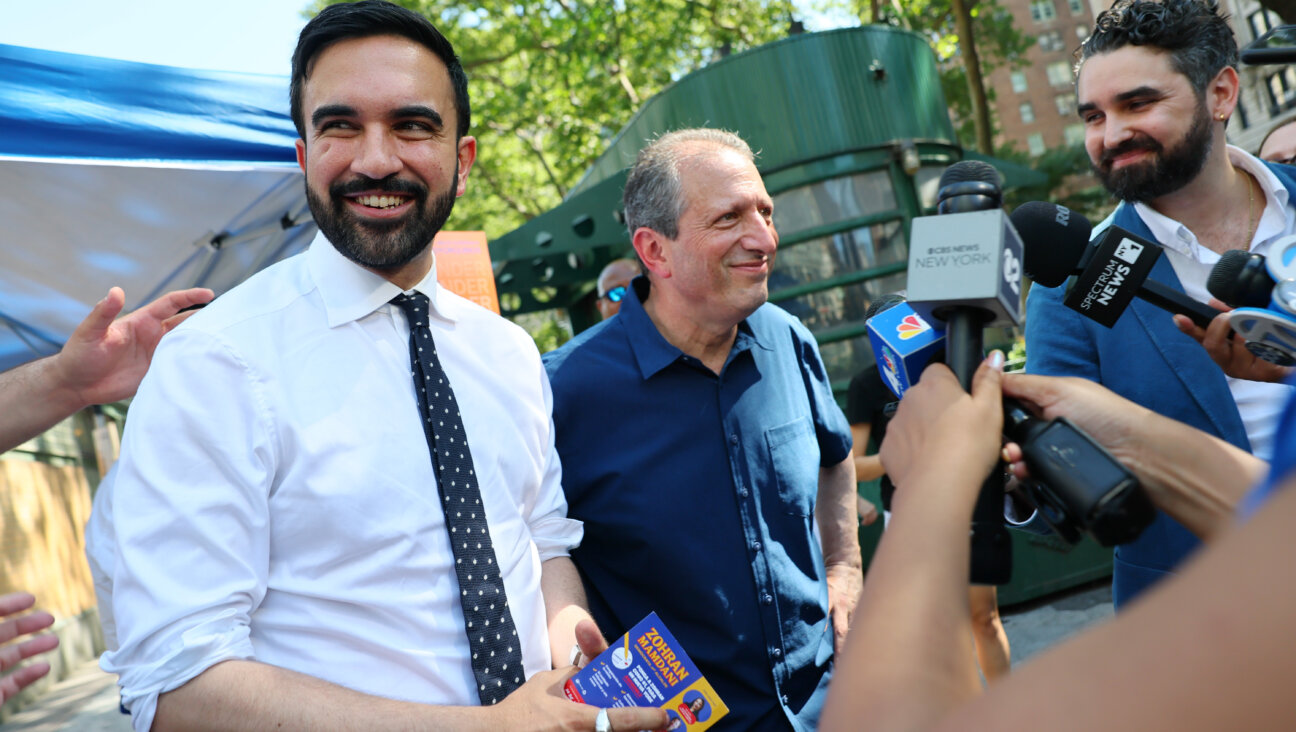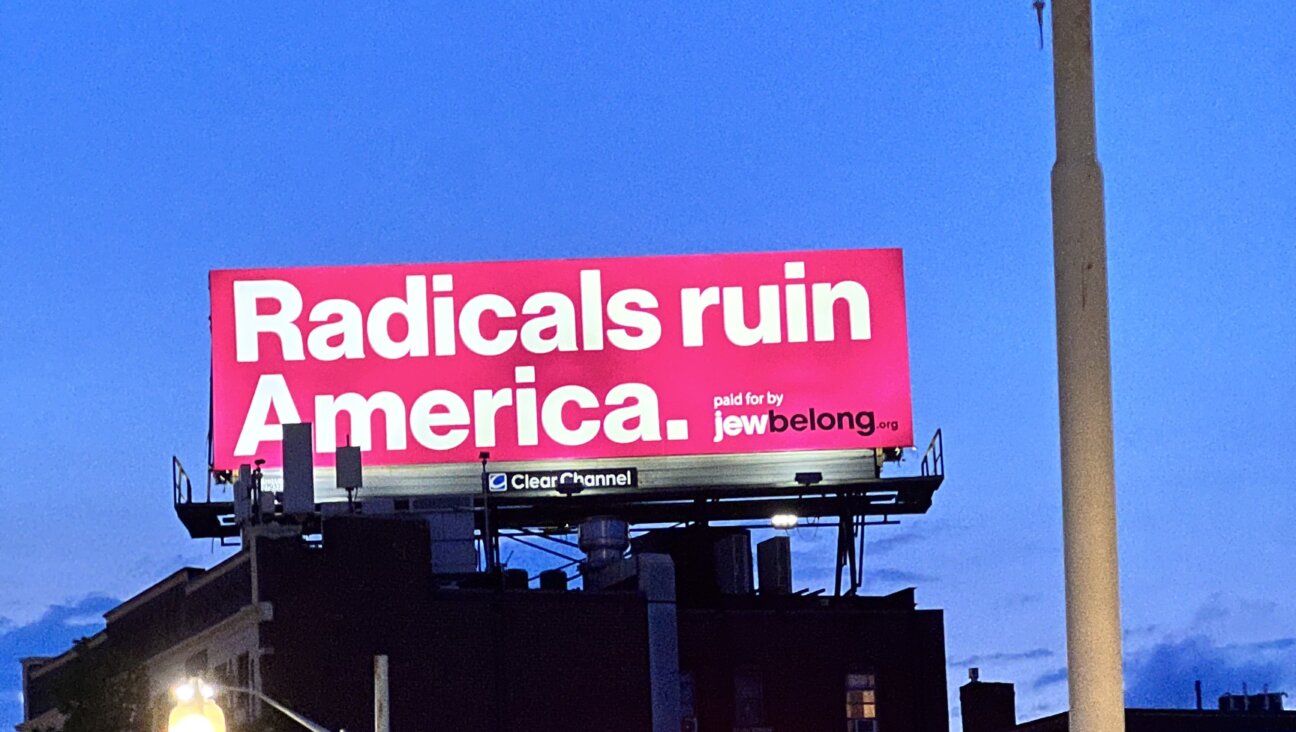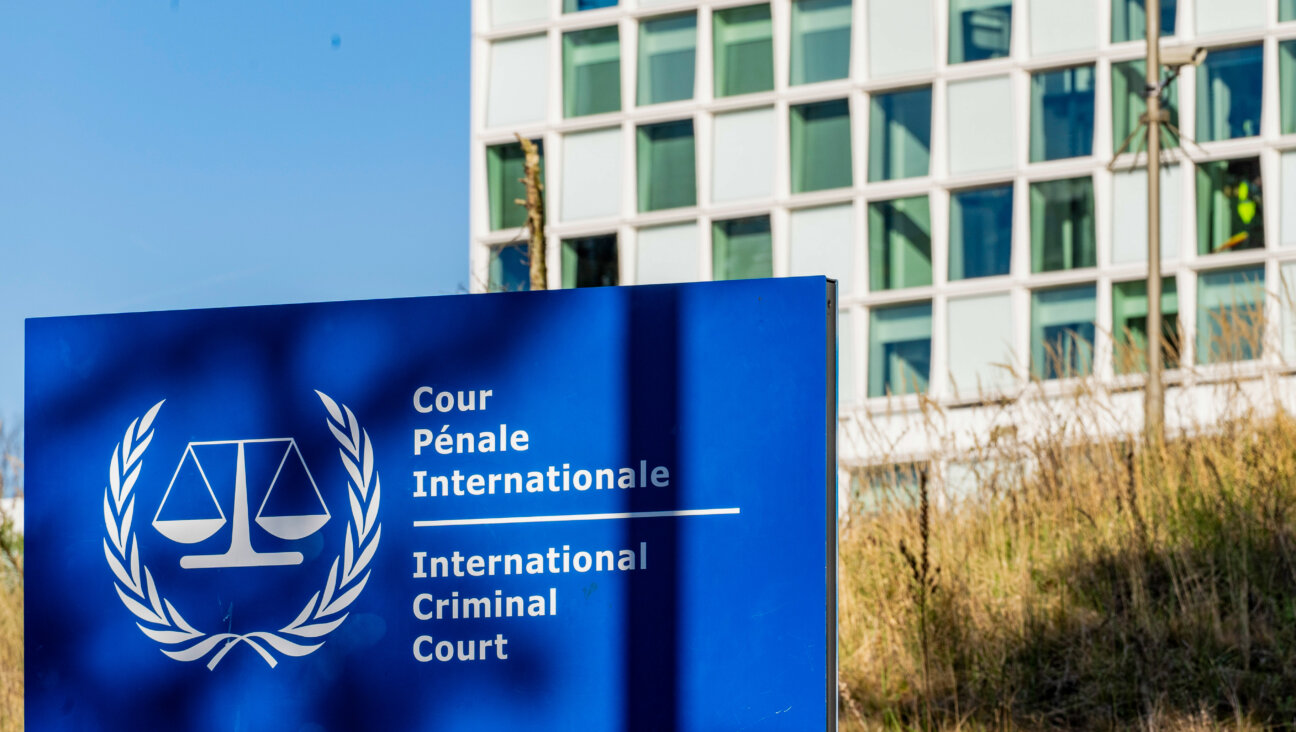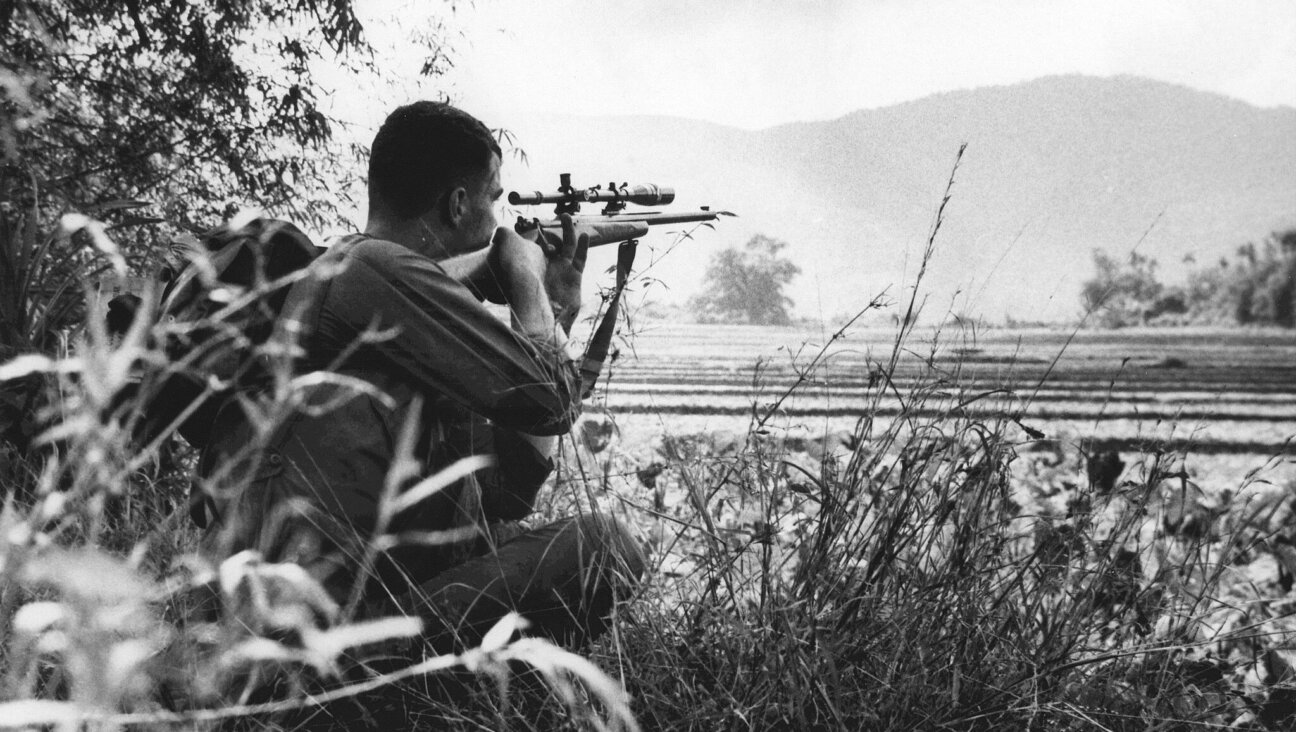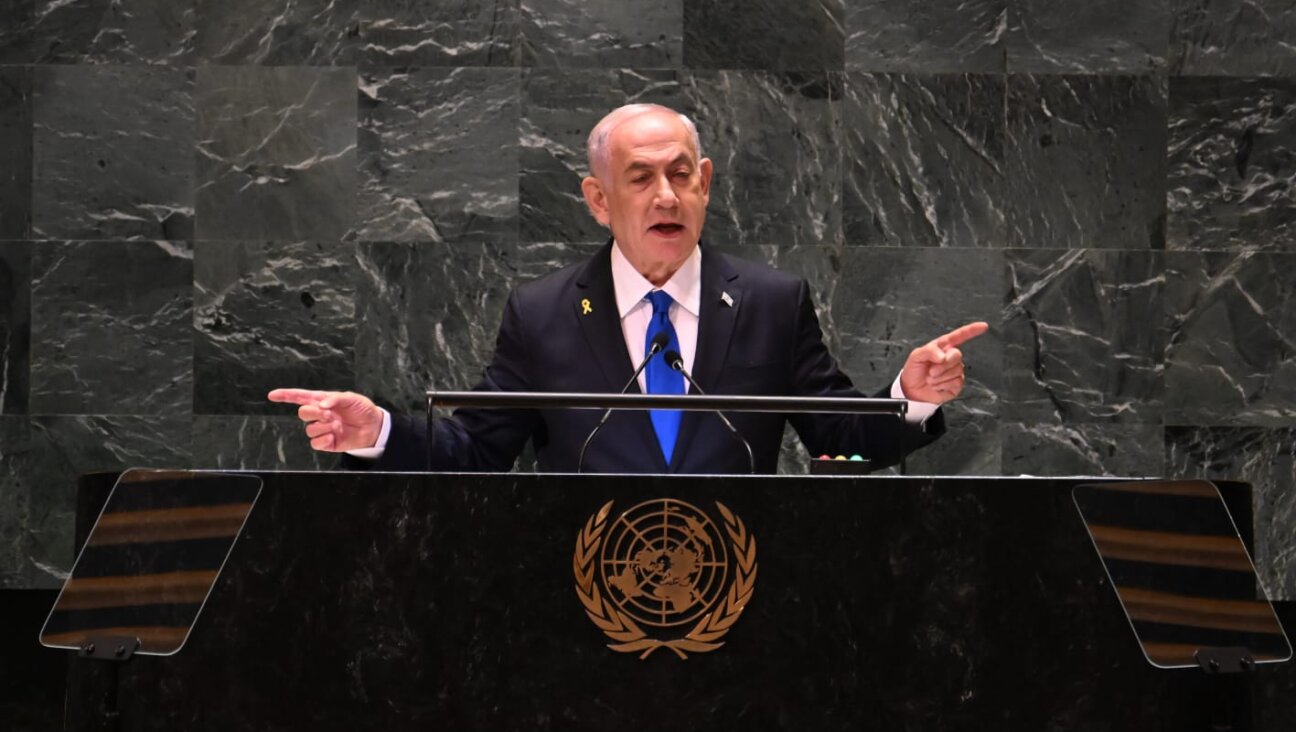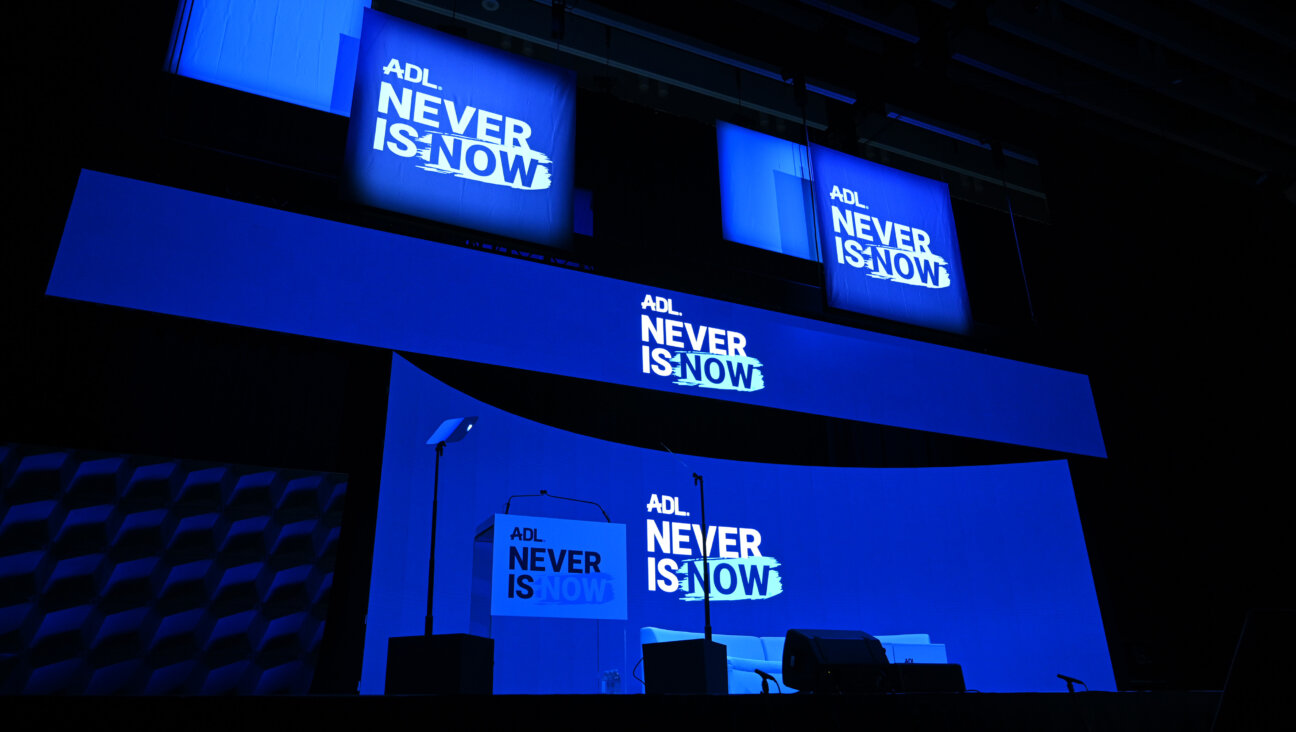Where Black and Jewish Identity Merge

Plane to Zion: Emily Raboteau, author of ?Searching For Zion,? traveled the world on a quest to understand the yearning for the promised land. Image by courtesy emily raboteau
Before they had finished their books, before Sharifa Rhodes-Pitts had published “Harlem Is Nowhere” — a finalist for the 2011 National Book Critics Circle Award — and before Emily Raboteau had published “Searching for Zion,” which was published in January, the two women used to take walks together. They would amble past the George Washington Bridge, the Morris-Jumel Mansion, Jumel Terrace Books and other landmarks in the Upper Manhattan neighborhoods where both authors currently live.
Both Raboteau and Rhodes-Pitts are young mothers in their 30s whose nonfiction books share a common theme: a yearning for some sort of promised land. For Rhodes-Pitts, whose book is the first in a planned trilogy about black utopias, that place is Harlem; for Raboteau, it is not just one place, but a series of locations where displaced blacks have endeavored to find a homeland.
Raboteau’s journey began in Israel, where her best friend from childhood had moved to make aliyah, but it also led her through such locations as Jamaica, Ethiopia and Ghana, where she came to challenge some of her long-held assumptions about race and religion. The Forward’s Adam Langer invited the authors to have another conversation, this time at Emily Raboteau’s office at City College where she teaches. The writers discussed parenthood, promised lands, and their thoughts on the relationship between blacks and Jews.
Adam Langer: Can you talk about the idea of a promised land and how your impression of that concept changed over the course of researching and writing your books?
Emily Raboteau: One of my favorite lines in your book about Harlem being a promised land is, “This is our land that we do not own,” which is so declarative and simple, but also incredibly complex and troubling and sad.
Sharifa Rhodes-Pitts: How do you feel like that applies to the places that you visited? Or does it?
E.R.: Well, it does. For me, when I thought of what the promised land meant, it was always a metaphor for freedom, something I understood in part through the scholarship of my father, who has studied the meaning of the story of Exodus for black Americans in history, in particular what it meant for slaves. And for them, the promised land was the story of the book of Exodus, and the kinship they felt with the Hebrew slaves of the Bible was what gave them personhood in a sense.
E.R.: You had all of these people from different tribes who came here and were yoked by this story, and it was a hopeful story — if the slaves of Pharaoh in the Hebrew Bible could get out of bondage and find a home, then so can we. And for them, it was often a geographical configuration, an idea of the North. In the Great Migration, of course Harlem is a promised land, and for so many people coming from the South during the Great Migration.
But when they didn’t find it, or when it wasn’t exactly the Land of Milk and Honey they had envisioned, I became interested in discovering where else geographically that might be, but also politically what that might mean. I was also interested in how Zion has been configured as a political freedom like we hear in the speeches of Dr. Martin Luther King — like an idea of civil rights, not necessarily a place.
A.L.: Both of you began your books before you had children, and now both of you are mothers. How does being a mother affect your work, and your concept of a “promised land”?
E.R.: When you’re traveling the world as a woman alone without a man, without a child, you’re often asked two questions: “Where are you from?” which is not always an easy thing for people to identify with me, and, “Where are your children?” Here I was, a woman around 30 and people didn’t understand: “What are you looking for?” “What is your journey about?” “Shouldn’t you be a mother by now?”
S.R.P.: Because I was conducting my research — as that is loosely understood in my life as a writer — in Haiti while pregnant, it imposed a weird question. There was my child coming soon; what was I doing traveling around in a foreign country? For what? What quest was I on?
E.R.: And I think that you as a pregnant woman become a walking metaphor for creation and creativity in a way. People want to care for you, people gravitate towards you. They want to touch your belly. It does create a different response, even among strangers when you’re circumnavigating a place like Haiti — you were there in the aftermath of the earthquake, you have this land that I imagine is still rocking and reeling from that destruction, and you’re walking around with something you’re building, a newness: Life still happens, life goes on.
A.L.: When someone asks you those sorts of questions — who are you or where are you from — what’s your response?
E.R.: The answer depends on who’s asking and why. I think often for me, it’s a racial question. People are insecure or unsure of what my racial background is, and so often, I think what they really want to know is the answer that satisfies that question, which is that my father is black and my mother is white and that’s why I look the way I do. What about for you? Particularly as someone who wrote about Harlem but isn’t from there technically.
S.R.P.: It’s not a place I really claim to be from. Even after a decade of living in New York, I never say I’m from New York. A friend of mine from Houston, which is where I grew up, always calls me out on this. I never say I’m from Houston; I say I’m from Texas, which he points out rightly is my own mythmaking.
E.R.: Part of my journey for this book really began in my 20s, and it had to do with an unease I felt about that question: “Who are you?” “Where are you from?” I didn’t feel it was an easy answer for me, or that it was an answer that often satisfied, so at the age of 23 I went to Israel. It was during a time when I had a sense of disillusionment with America because it was right after the Bush regime had stolen the election.
I wanted to get out and see the world. I felt like, “Screw this place.” When I visited Israel, I was surprised to feel as jealous as I was of my best friend from my childhood, who had made aliyah and moved to Israel — her ability to claim a new place, a new homeland, which at that time I would have liked to have done. Of course Israel was a mess, too; it was at the time of the second intifada. I discovered black people there and was sort of shocked and amazed, because in my mind, these two identities were very compartmentalized — Jews and blacks.
And I thought, what are these people doing here? How did they get here, and why? And I thought, all right, I want to keep finding black people who left America out of a sense of disillusionment or disenchantment or hope to find the Zion on earth somewhere else and see if they discovered it, in part because I wondered, even for myself, is there someplace else I’d like to live?
A.L.: Can we talk about the historically troubled relationship between blacks and Jews and how your conception of it may have changed while writing your books?
E.R.: I wouldn’t say I had much of a sense of a troubled relationship between blacks and Jews as much as a kinship between them, although I do remember the Crown Heights riot. In the wake of it, I remember my father taking my friend Tamar, the friend I visited in Israel, and I to an exhibit at The Jewish Museum, which was about the links in history between blacks and Jews. I must have been 13 or 14 at the time.
I remember learning about the shared histories of oppression and pain, but also hope because of that story that tied these two people together, so for me the project of this book wasn’t to talk about tensions between these two communities so much as ties between them. I went to Jamaica specifically because I was a fan of reggae music, and I kept hearing time and time again “Zion” in the lyrics of these songs.
And I wanted to know more about the Rastafari faith and what the ties between that faith and Judaism were, and was as surprised to discover in Jamaica a synagogue with white Jews in its congregation, as I had been surprised to discover black Jews in Israel. To a degree, one of the processes of my journey was a falling away of thinking about those terms so categorically, because, of course, one can be black and Jewish at the same time, and many people are.
S.R.P.: Well, the question of change in Harlem, which is something my book is concerned with, requires us to think about the different neighborhoods Harlem has been over time, and one face of Harlem historically was Jewish. There were Jewish sections of Harlem, there were Irish sections of Harlem, there were Italian sections of Harlem.
And so the mythical Harlem that carried its fame around the world through most of the 20th century from 1905 is about the time Harlem begins to be a black neighborhood. There are lots of synagogues that are now Christian places of worship.
E.R.: There’s a synagogue on old Broadway, very close to the 1 train, which is still an active synagogue with black Jews as well as white Jews, if you want to use those terms.
S.R.P.: I took a class in college with Jamaica Kincaid, who is from the British Caribbean and converted to Judaism, and her reading of the black American story of Exodus was really interesting to me because she said the Hebrew slaves had a different God than their oppressors and that when they were fleeing toward freedom, it was with the vision that their God would not do this. Certainly the slaves found inspiration in Exodus, and certainly the black church has been a force for liberation struggle. But I always wonder what would have happened if people had refused the God of the slave masters.
E.R.: Well, a lot of them did. I was interested in part in learning about links between blacks and Jews, because you have this sort of flowering of black Judaism and people like Jamaica Kincaid, who, decades earlier, were embracing Judaism.
A.L.: In taking your journeys, do you have any hope that your children won’t be brought up with the same need to search for answers, that they will already have the answers you’ve written your books to search?
E.R: I don’t like to think of my children being people who would not search or ask questions. At the same time, I hope for them to have a more secure sense of themselves and who they are in the world than I did as a young person.
S.R.P.: I imagine the question of black liberation, of black freedom, is a different question for our generation that it was for our parents or our grandparents. So it’s going to be a different question for our sons’ and daughters’ generation, but I don’t think it’s a question that will have evaporated.
E.R.: Something that was carrying on my journey was this provenance of my own blackness. I was interested in talking to black people who’d left home to find the Promised Land, and then I kept arriving in these places and having that question upset or overturned. The Ethiopian Jews I talked to in Israel, for example, don’t think of themselves as black or even necessarily as African.
Your son is of two places; my children have that experience, as well. So, the questions they ask will be different because their backgrounds are different than ours were and are. These questions of identity are shifting as boundaries and borders change.









